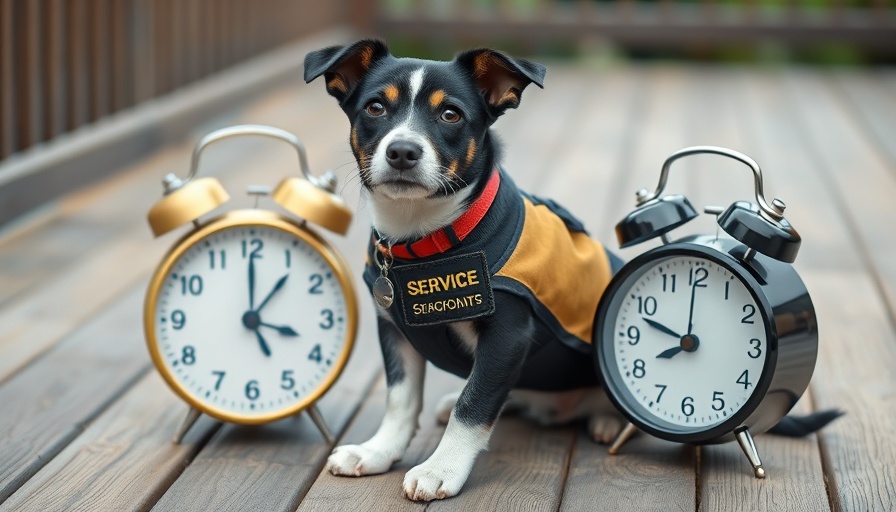
Understanding the Responsibility of Dog Owners
As a dog owner, taking care of your furry friend goes beyond just providing food, love, and shelter. One pivotal responsibility is managing your dog’s waste, as improper disposal can contribute to health hazards and pollution. In community parks and trails, where nature meets daily life, the effects of irresponsible pet waste disposal can become painfully visible. This article aims to highlight best practices for pet waste management, emphasizing both personal and communal responsibility for a cleaner environment.
The Impact of Neglected Pet Waste
Failure to clean up after dogs is not merely a matter of aesthetics; it has broader implications for the community. Pet waste can harbor harmful bacteria and parasites that contaminate soil and water, posing health risks to other animals and even humans. Rainwater can wash waste into storm drains, eventually leading to water bodies where it disrupts aquatic ecosystems. Being conscientious about waste disposal not only protects your own pet but also contributes to a healthier habitat for all local wildlife.
Best Practices for Managing Pet Waste
Managing your dog’s waste effectively means adopting a few straightforward habits that can make a significant difference. Here are some recommended tips:
- Always Carry Poop Bags: When you step outside with your dog, ensure you have sufficient poop bags—preferably biodegradable ones to minimize ecological impact. This simple act shows respect for your surroundings.
- Dispose Immediately: Whatever the environment, clean up immediately after your pet. This helps prevent odors and health hazards while ensuring your community remains pleasant for all.
- Consider Composting: If you’re eco-conscious, composting dog waste can transform it into a resource for ornamental gardens. Just be sure to set up a separate compost area to avoid contamination with food gardens.
- Utilize Professional Services: If your schedule is demanding, consider hiring a pet waste disposal service. They offer scheduled pick-ups, ensuring your yard remains pristine even when you’re pressed for time.
The Benefits of Responsible Waste Management
There are numerous advantages to practicing responsible pet waste management. First and foremost, your commitment to cleaning up after your dog fosters community pride and respect. It enhances the enjoyment of public spaces for families and adds to the overall beauty of your neighborhood. Moreover, efficient waste management protects the environment by reducing the risk of pollution and promoting healthier ecosystems.
Understanding Different Disposal Options
While carrying your poop bags home is a common practice, there are several alternative disposal methods worth considering:
- Dog Poop Bags: Use consumer-friendly options available in various designs, including custom bags for branding if you're in the pet industry.
- Scoop and Flush: For individuals living in urban settings, scooping waste and flushing it can be a sustainable alternative. Make sure to use septic-safe bags to avoid clogging.
- Burying Waste: If you have space, burying waste can be an eco-friendly choice, as long as it’s done safely to avoid health risks.
Community Engagement and Education
Encouraging proactive pet ownership in communities involves working as a cohesive unit. Educating fellow dog owners about the critical importance of picking up waste can spark community initiatives, like park clean-up days or educational signage promoting responsible practices. Additionally, audience-driven workshops can teach dog owners the benefits and methods of responsible pet waste management while enhancing community engagement.
Involving Local Resources
Take further initiative by collaborating with local environmental organizations. They often have resources or programs that can amplify awareness about responsible pet ownership and promote eco-friendly alternatives. Utilizing the knowledge and networks available through your community can foster a shared sense of responsibility.
Conclusion: A Shared Responsibility
Keeping our parks and neighborhoods clean is a monumental task that requires cooperation among pet owners and non-pet owners alike. By embracing responsible pet waste management habits, you contribute to a healthier environment. So, let's all remember that a clean community not only protects our health but enhances the joy of owning a pet. Let’s ensure that our love for dogs translates into actions that uphold the beauty of our surroundings. Be proactive, engage others, and inspire a cleaner community!
 Add Row
Add Row  Add
Add 




 Add Row
Add Row  Add
Add 

Write A Comment